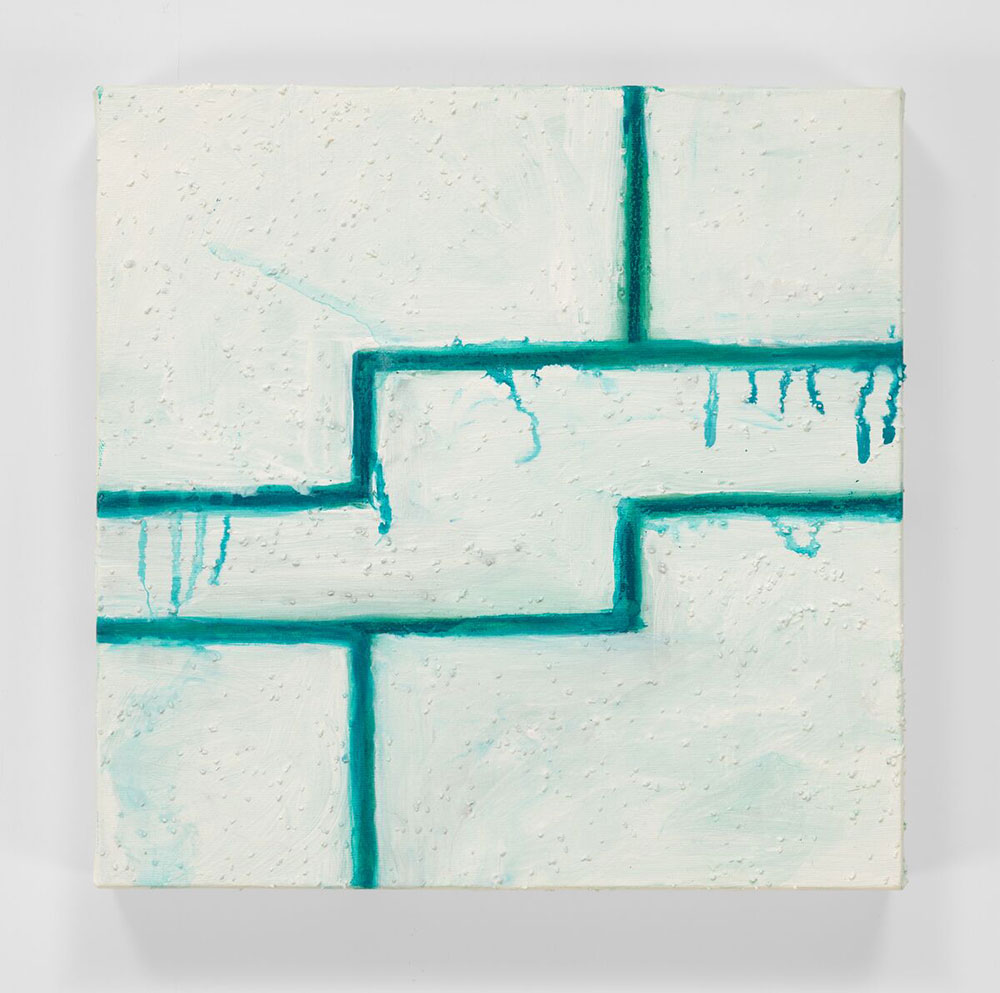ART-PRESENTATION: Mary Heilmann-Highway, Oceans, Daydream
 Influenced by 1960s counterculture, the free speech movement, and the surf ethos of her native California, Mary Heilmann ranks amongst the most influential abstract painters of her generation. Considered one of the preeminent contemporary Abstract painters, Heilmann’s practice overlays the analytical geometries of Minimalism with the spontaneous ethos of the Beat Generation, and are always distinguishable by their often unorthodox – always joyful – approach to color and form.
Influenced by 1960s counterculture, the free speech movement, and the surf ethos of her native California, Mary Heilmann ranks amongst the most influential abstract painters of her generation. Considered one of the preeminent contemporary Abstract painters, Heilmann’s practice overlays the analytical geometries of Minimalism with the spontaneous ethos of the Beat Generation, and are always distinguishable by their often unorthodox – always joyful – approach to color and form.
By Efi Michalarou
Photo: Hauser & Wirth Gallery Archive
For over 25 years Mary Heilmann has been living and working between New York City and the oceanside hamlet of Bridgehampton on Long Island’s storied East End. In her solo exhibition “Highway, Oceans, Daydream”, Mary Heilmann juxtaposes new paintings completed over the months of the pandemic while sequestered in Bridgehampton, with earlier works that find her recalling the landscapes of her life. From the onset of the global pandemic in March through September of this year, Heilmann remained in Bridgehampton, marking the longest consecutive period she has ever spent at her Long Island studio. During these months she immersed herself in the mutable conditions of light, air, and colors specific to the oceanfront environment, channeling her observations into new paintings that expand upon her ongoing fascination with waves and water. Drawing from a life lived on both coasts (the new works on view in this exhibition synthesize her memories of the scenic highways and coastal vistas of her youth with the ever changing, elusive geometries of Atlantic Ocean waves. “Highway, Oceans, Daydreams” spotlights Heilmann’s distinctively sculptural approach to paint and unique ability to elicit complex associations through deceptively simple forms. In contrast to earlier paintings that depict water, the new works find her taking a more formalist approach, creating representations of a wave’s spirals, tubes, and undulations. To evoke the texture of sand, Heilmann has employed here, for the first time, a grainy medium mixed into her paint to enhance its thickness and tactility. Her teal blue waters sport frothy white crests that rise on the surface of shaped canvases ranging from as small as four by six inches, to as large as eight feet wide. That her waves envelop the viewer at every scale, is a testament to Heilmann’s virtuosity. Coupled alongside these new paintings, the exhibition features older works that contextualize the sculptural ambition of her brightly painted shaped canvases, as well as Heilmann’s stained wood panels that incorporate the underlying woodgrain into their composition. All of her varied techniques on view reinforce the artist’s consistent inventiveness and deep connection with the boundless unknowability of the ocean and the landscape of her America.
Raised in San Francisco and Los Angeles, Heilmann completed a degree in literature, before she studied ceramics at Berkeley. Only after moving to New York in 1968 did she begin to paint. While most artists at that time were experimenting with the concept of dematerialization and demanding that painting should avoid any references to experience outside the material presence of the work itself, Heilmann opted for painting, rebelling against the accepted rules. “Rather than following the decrees of modern, non-representational formalism, I started to understand that the essential decisions taken during the creative process were more and more related to content. The Modern movement was over…”. Since then, Heilmann has created compositions that evoke a variety of associations. Her work may be non-representational and based on an elementary, geometrical vocabulary – circles, squares, grids and stripes – but there is always something slightly eccentric, casual about them. The simplicity of the forms is played down by a deceptive form of nonchalance: the contours are not clearly defined. In some paintings, amorphous forms appear to melt into each other like liquid wax. Splashes of color can be discerned, sharp edges bleed for no apparent reason, and the ductus of the brushstrokes is always perceptible. Heilmann’s casual painting technique conceals a frequently complex structure that only gradually reveals itself to the viewer.
Info: Hauser & Wirth Gallery, 9 Main St, Southampton, New York, Duration: 17/10/20- , Days & Hours: Tue-sun 11:00-18:00 (By appointment only, book here), www.hauserwirth.com










